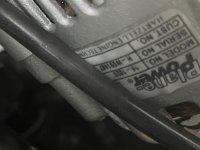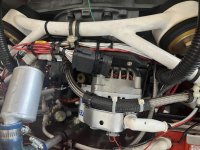Toddsanderson
Well Known Member
Hello,
I have a RV-14A with YIO-390 engine, plane power experimental 60 amp belt driven alternator, Plane Power 30 AMP accessory pad driven backup alternator, and VP-X power system all installed by SteinAir. My panel has a two position master battery/main alt switch and a separate rocker switch for the backup alternator. The previous owner told me to NOT engage the backup alternator switch unless the main alternator fails and then to turn off the main alternator and then engage the backup. SteinAir has not gotten back with me yet to give their opinion of proper operation.
The Plane Power website is very lacking in information; however, I did find one document that states that the backup alternator should be armed at all times and that it will automatically engage at 13.6V buss power. The VP-X shows that the backup alternator does indeed have power to the field when the master switch is engaged (even with the backup rocker switch off), so it does have the ability to produce power if needed, but I am not sure if the rocker switch should be activated after startup?
Anyone have the same setup or can clarify? Much appreciated!!
I have a RV-14A with YIO-390 engine, plane power experimental 60 amp belt driven alternator, Plane Power 30 AMP accessory pad driven backup alternator, and VP-X power system all installed by SteinAir. My panel has a two position master battery/main alt switch and a separate rocker switch for the backup alternator. The previous owner told me to NOT engage the backup alternator switch unless the main alternator fails and then to turn off the main alternator and then engage the backup. SteinAir has not gotten back with me yet to give their opinion of proper operation.
The Plane Power website is very lacking in information; however, I did find one document that states that the backup alternator should be armed at all times and that it will automatically engage at 13.6V buss power. The VP-X shows that the backup alternator does indeed have power to the field when the master switch is engaged (even with the backup rocker switch off), so it does have the ability to produce power if needed, but I am not sure if the rocker switch should be activated after startup?
Anyone have the same setup or can clarify? Much appreciated!!
Last edited:






